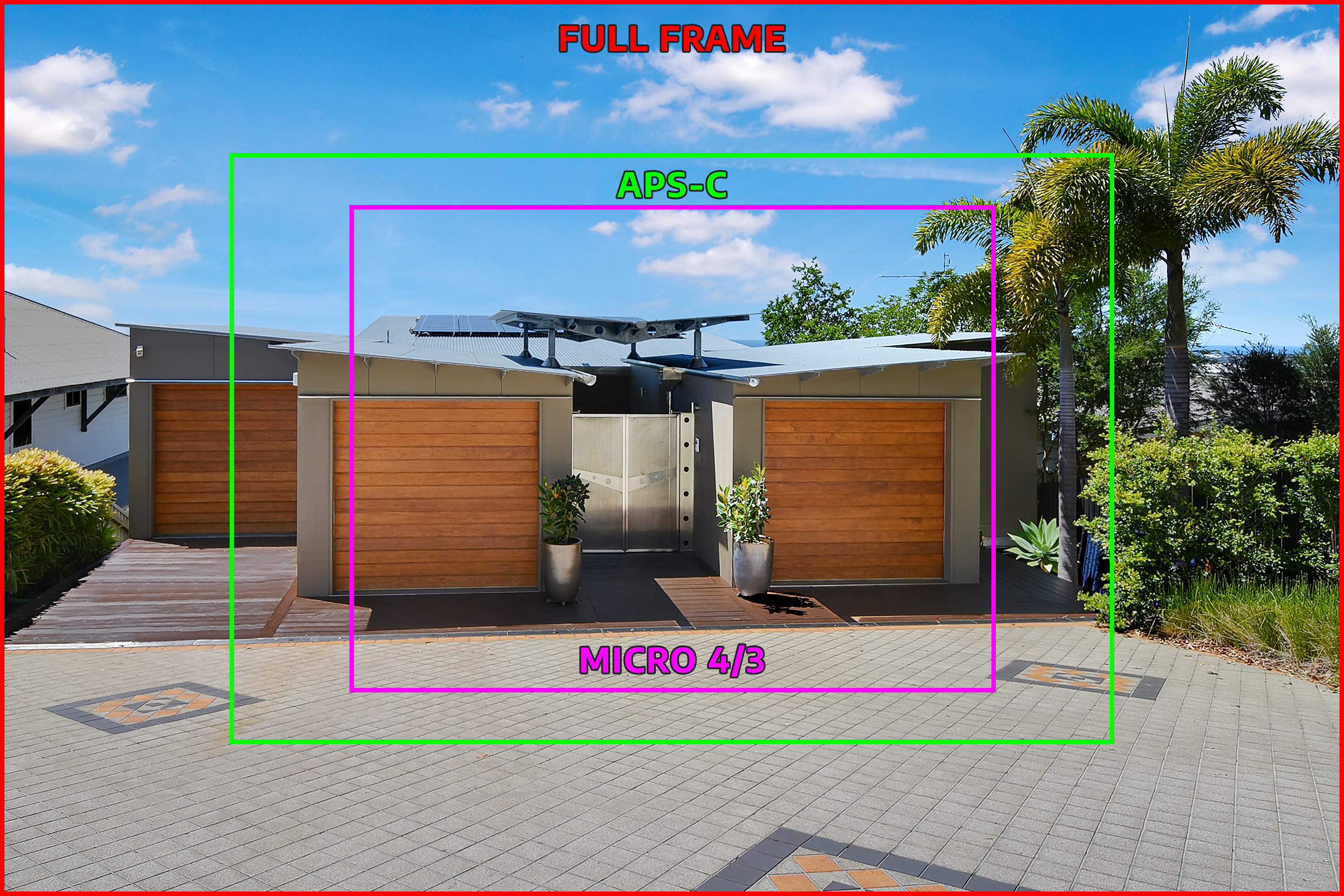WHAT ARE CROP SENSORS, FIELD OF VIEW & APERTURE?
So, you’re in the market for a camera, but have no idea what to buy and are faced with a mountain of jargon that makes absolutely no sense… you’re not alone!
What makes it even harder is there isn’t one camera to rule them all, they are all different, have different features and settings and suit a variety of different uses. The easiest way to choose the best camera is to work out what you will be using it for, as this will ultimately affect what functionality you will require.
If you’ve started looking for a camera this article will help you decipher all the confusing jargon used to describe camera features, so let’s get to it and hopefully make you camera purchase an easy one!
APS-C, Micro Four Thirds, and Full Frame
Put simply, these terms refer to the physical size of the sensor in a camera that captures the photo. While there are various sizes out there, for simplicity, we will stick to these three as they are the most common. In the same way, larger windows in a room show you more of the view outside, the larger the physical size of the sensor the more it can show in a photo.
Here is a basic description of what each means:
Full Frame – The name refers to the fact that a single frame size is the same as a traditional 35mm film. The large surface area allows for the senor to collect plenty of light, which helps to create high-quality large images. Most professional cameras and flag-ship manufacturer models are full-frame.
APS-C – Advanced Photo System type – C, is the name used for an image sensor format of 23.6 x 15.7mm, which partly crops images compared to a full frame lens. This sensor is common in entry-level and mid-range DSLR cameras, mainly because it provides a good balance between portability (helps keep a camera small), image quality, and flexible regardless of the lens used.
Micro Four Thirds – (Miro 4/3) Enables greater focal length for greater magnification. This sensor format designed for DSLR cameras, as it facilitates smaller cameras and lenses. This format is commonly used on Olympus and Panasonic compact system cameras.
Sensor Size Comparison:
- Large: Full Frame @ 35.9 x 24.0mm (this is taken from the original 35mm film size)
- Middle: APS-C @ 23.6 x 15.7mm (1.3 times smaller than Full Frame)
- Small: Micro 4/3 @ 17.3 x 13.0mm (2.8 times smaller than Full Frame)
So, is the full frame camera better?
In theory maybe, however other factors play a role in what is the best camera to buy. You can achieve a great Field of View (FOV – the amount of image shown) for real estate on an APS-C or Micro 4/3 with the correct lens attached when compared to full frame.
What is the best lens to use?
Not wanting to get too technical and into the never-ending discussions on the “perfect FOV” a solid reference point is:
- Full Frame – 16mm
- APS-C – 10mm
- Micro 4/3 – 8mm.
Using these lenses will capture a lot of the room or house you’re shooting, without looking too distant or larger than reality. They also have the same Field of View as each other due to what is knows as ‘Crop Factor’, no this isn’t a reality TV show to see who has the best lens, it refers to the amount of image is cropped due to the physical sensor size.
The following photo shows what each sensor would see when in the exact same position looking down the same size lens, in this case, 16mm.

Why does each image look different?
CROP FACTOR. To explain this simply, imagine you’re standing in a bathroom looking into a small rectangular mirror, you can see some of the room around you in the reflection, this is your Field of View (FOV). Now imagine you add more mirror around the smaller one, creating a larger rectangle, suddenly you see more of the room in the reflection (FOV increased), however, the distance between you and the mirror hasn’t changed (Focal Distance). Repeat the same process and your FOV shows even more while maintaining the same Focal Distance.
How do I change the Crop Factor?
With a camera you can’t add more sensor to the existing one, you instead need to change the Focal Distance, and this is where we get the lens size in millimetres. This
Of course, a camera lens is
Calculating the Lens Size to Use
To get the same Field of View of a full frame camera with a 16mm lens we need to reduce the magnification distance or “zoom out” from what we can see. Calculating the correct lens size is detailed the website mmCalc provides a free online calculator that explains the whole process.
One Last Consideration
The last thing to mention which is crucial in lens choice but needs a guide of its own to explain how it works
So, What Is the Final Outcome?
At the end of the day when deciding which sensor and ultimately what camera suits you best is down to the type of photography you plan to undertake. For real estate photography, we suggest using a camera with an ASP-C or Micro 4/3 sensor, as they are generally more compact and slightly cheaper. In addition, you’ll want to get a 10mm lens for an ASP-C sensor and an 8mm for a Micro 4/3 to get the full frame shot required for real estate.
New to real estate photography and want to learn more? Check out some of our other blogs.
- Taking Dusk Photos With A Smartphone
- Using a DSLR Camera For Real Estate Photography
- Different Camera Setups For Taking Real Estate Photos
- Using Your Smart Phone For Real Estate Photography